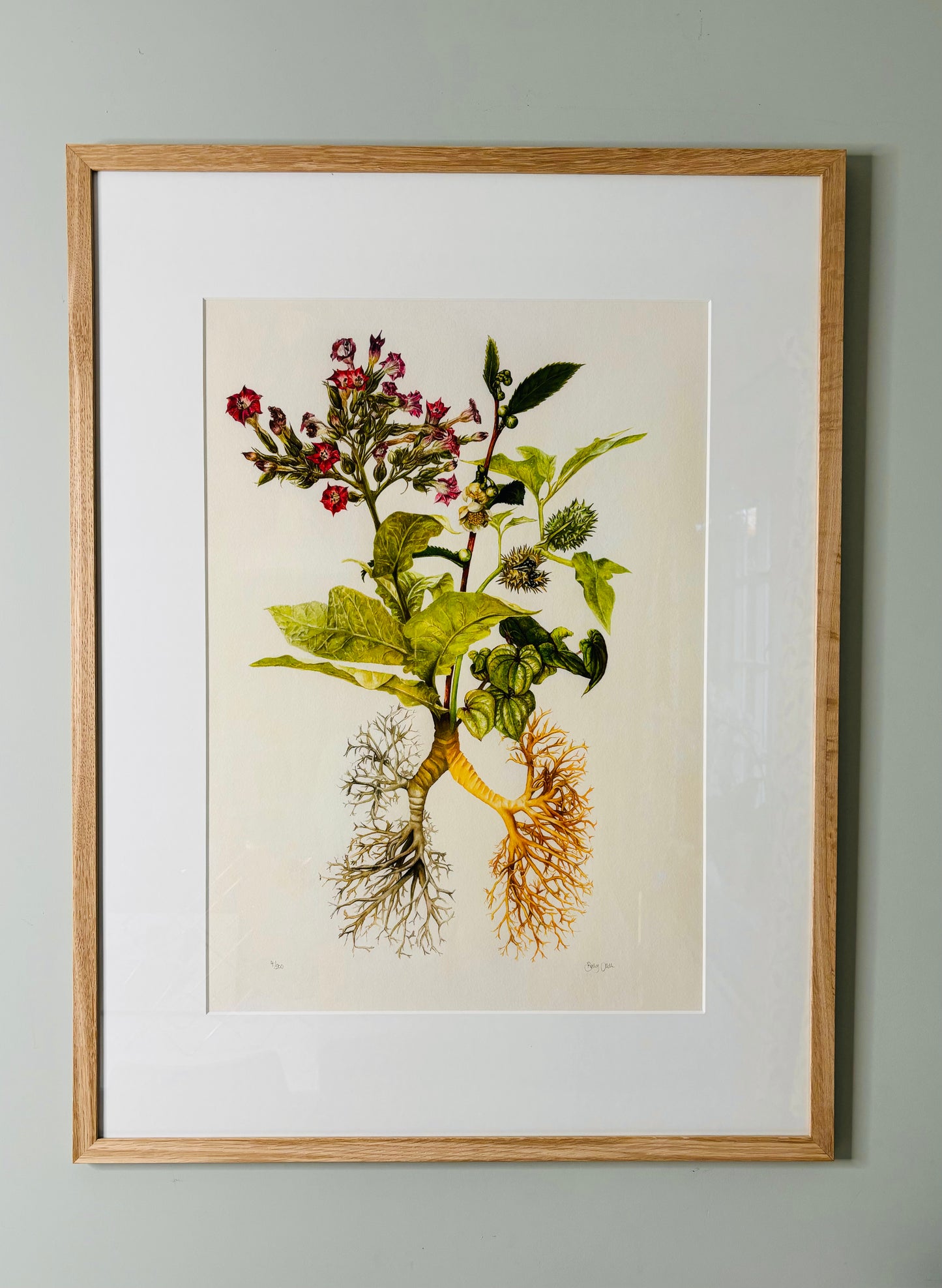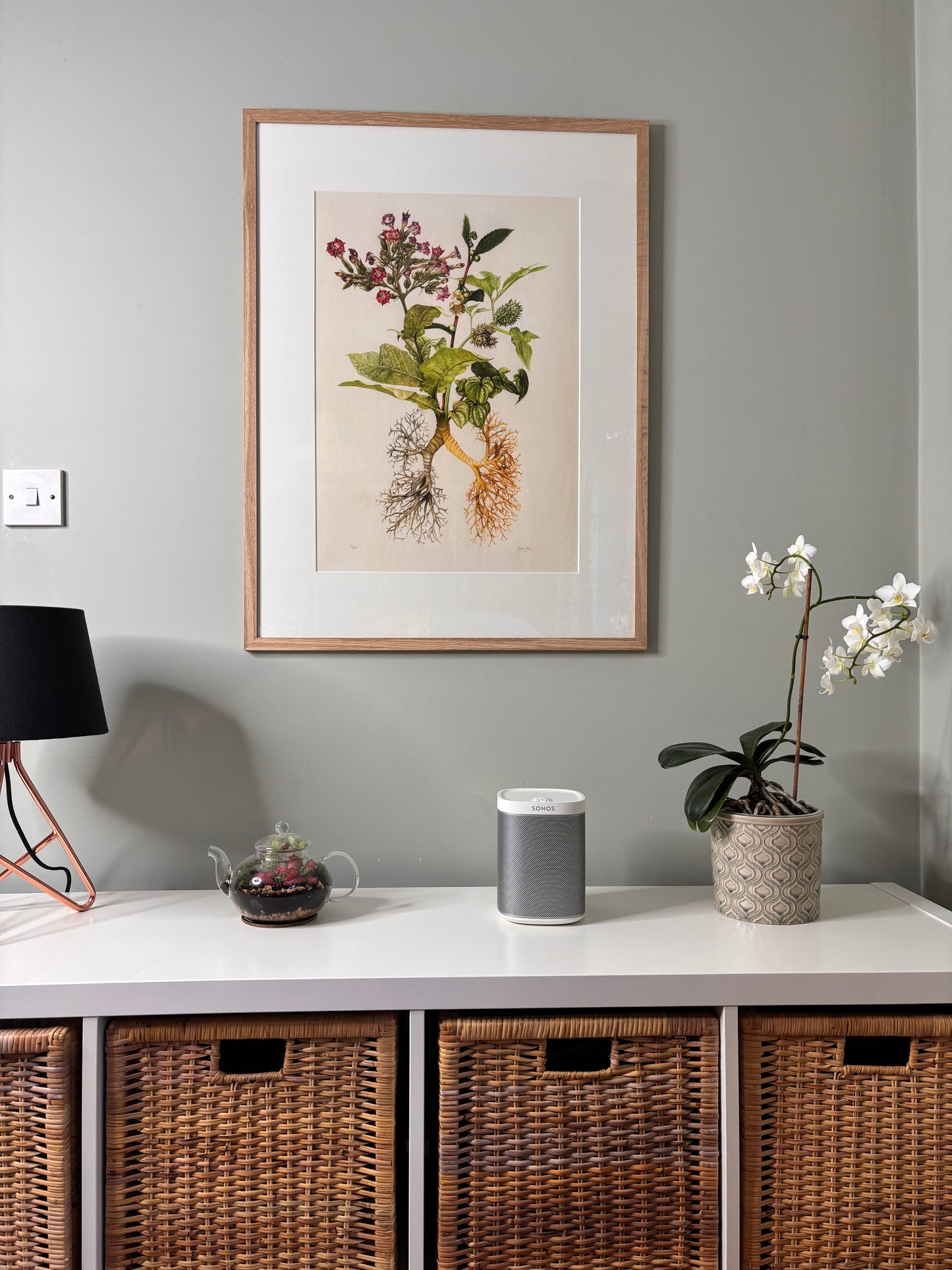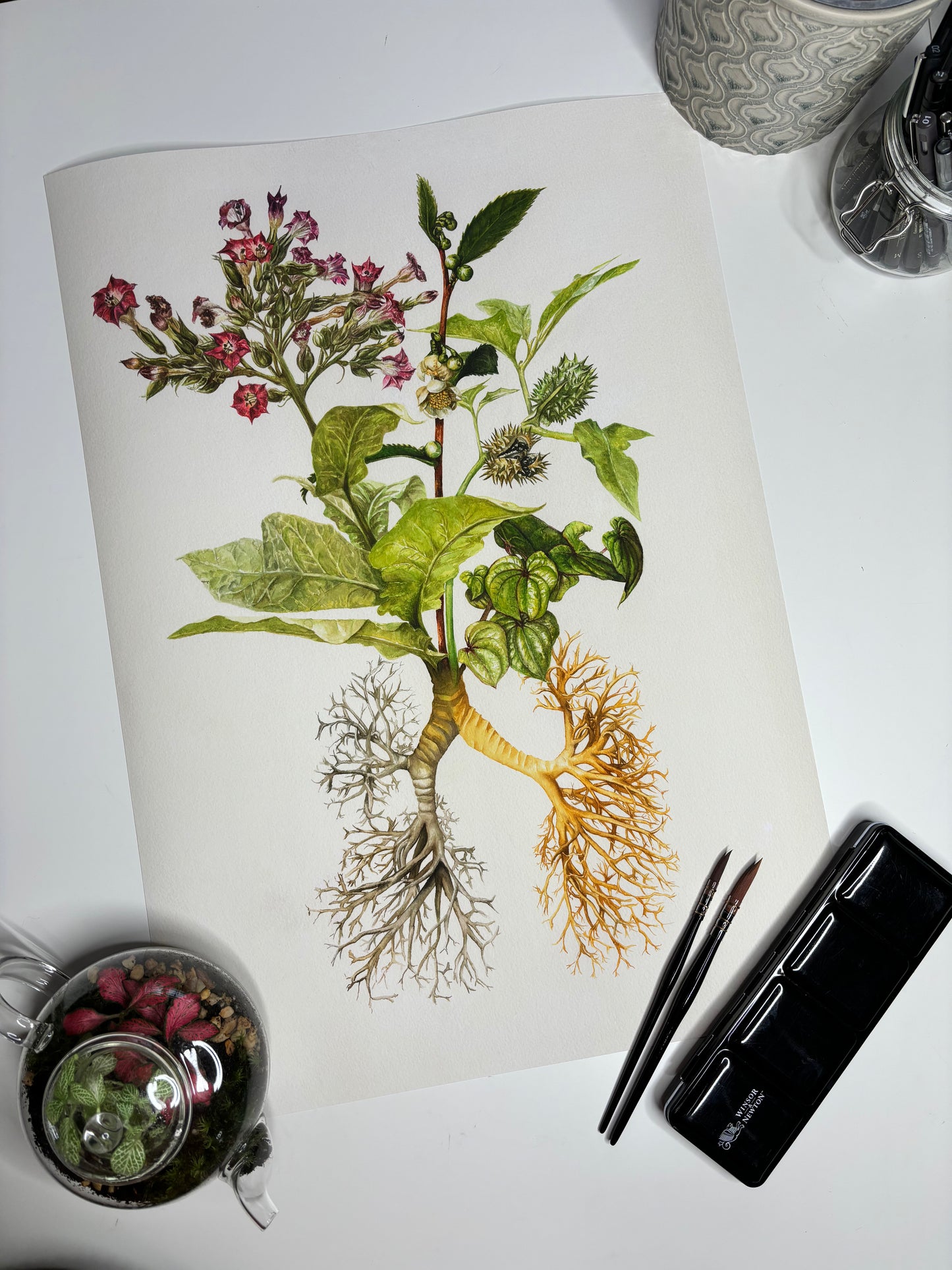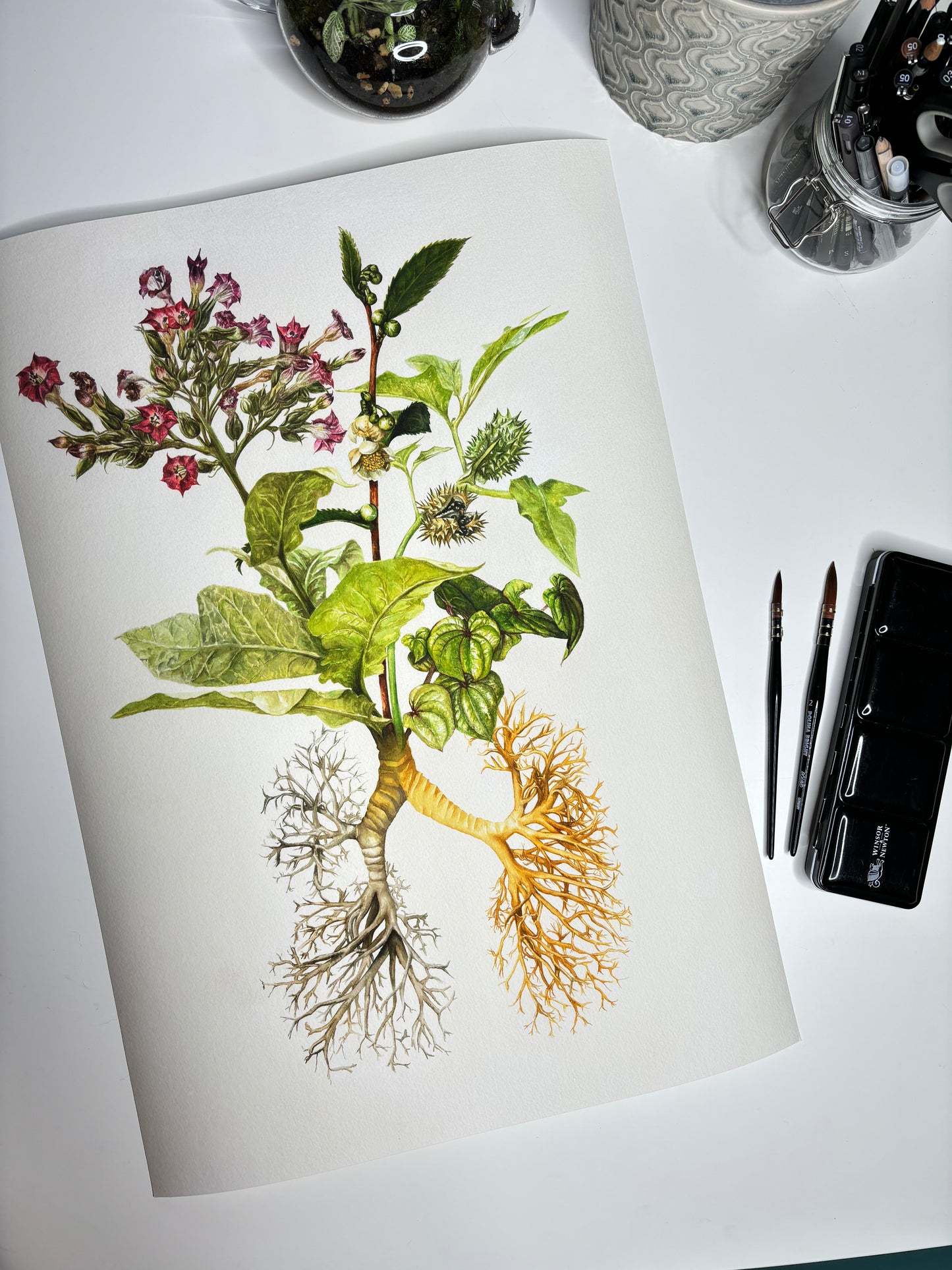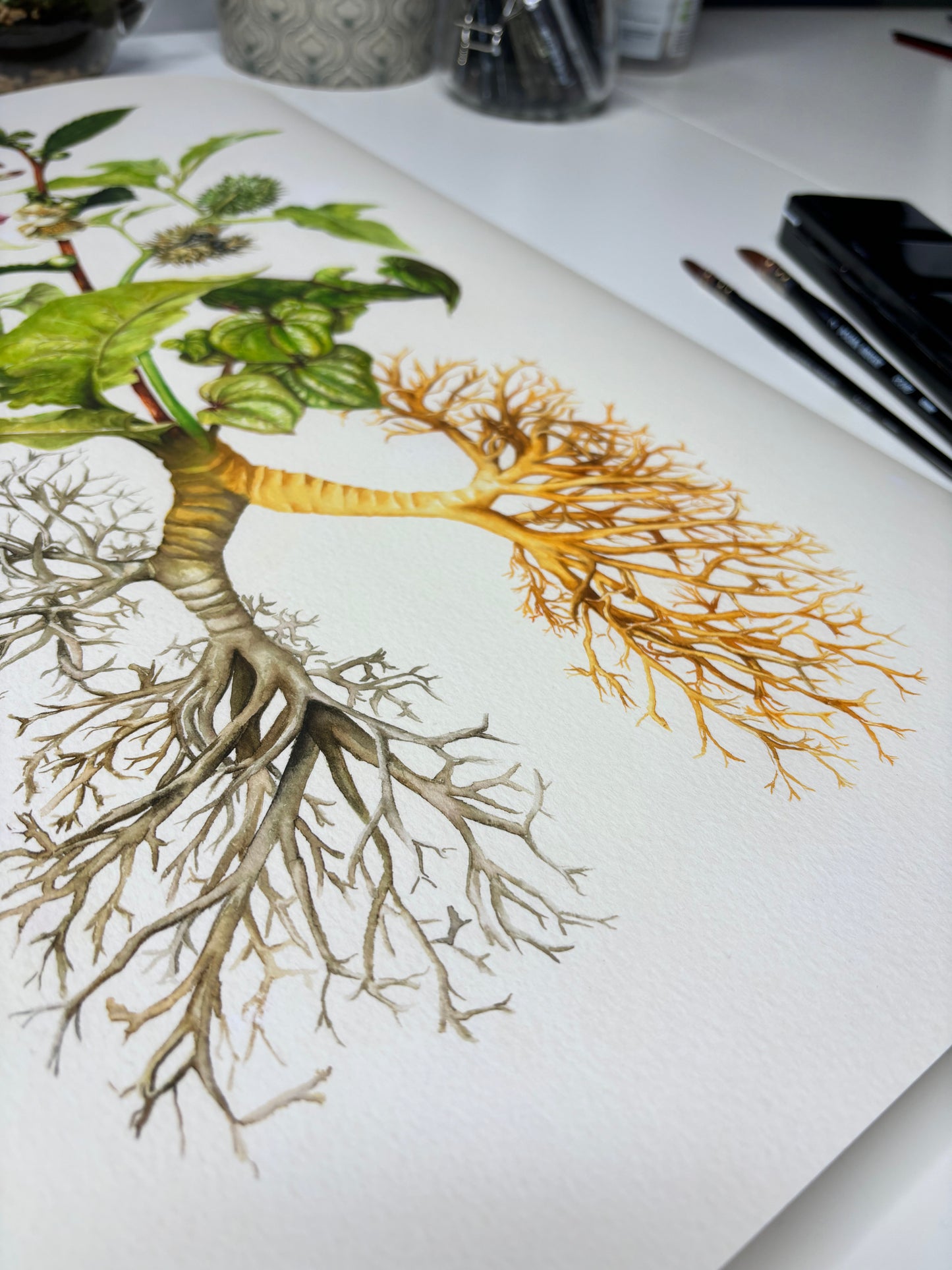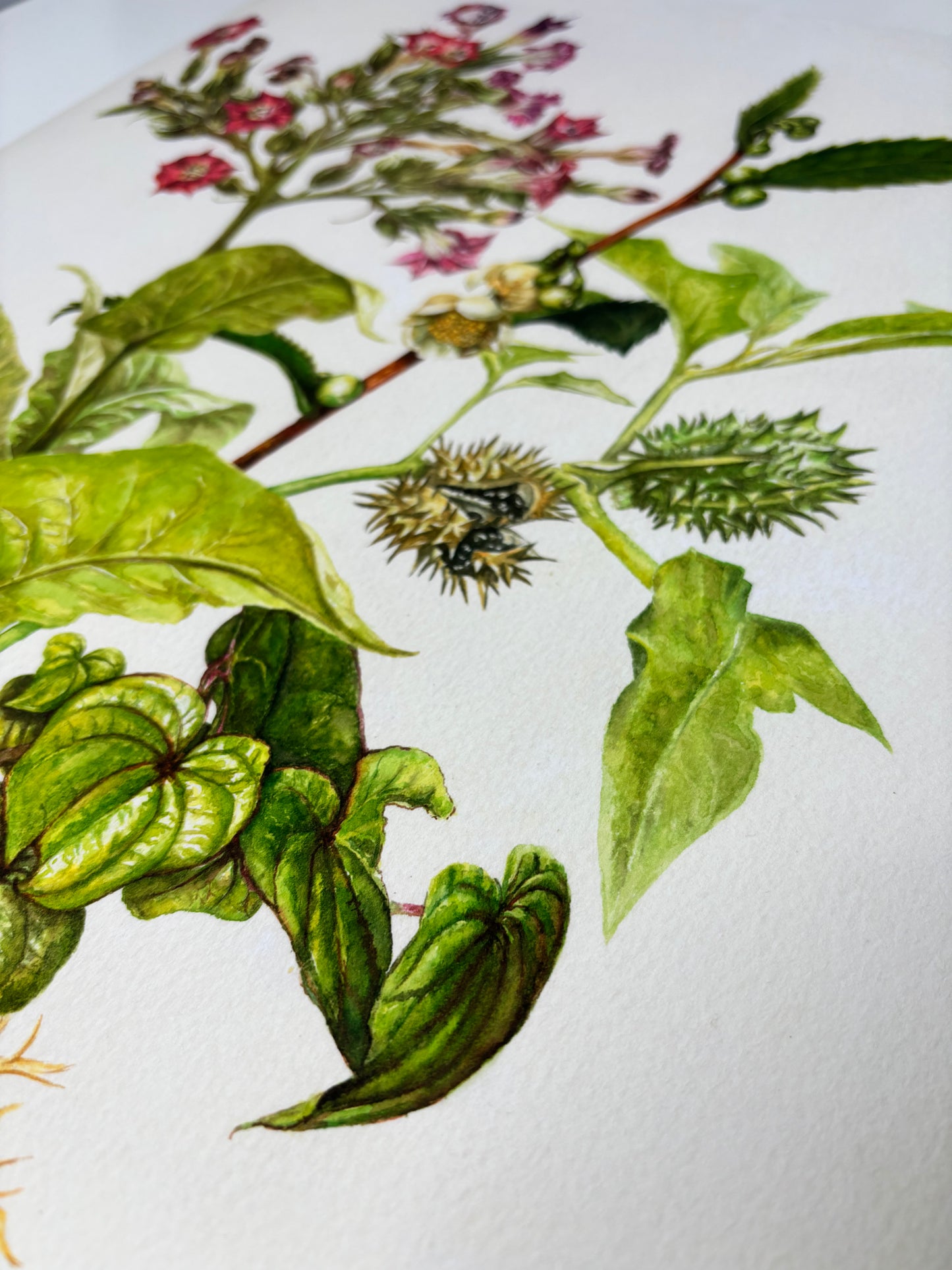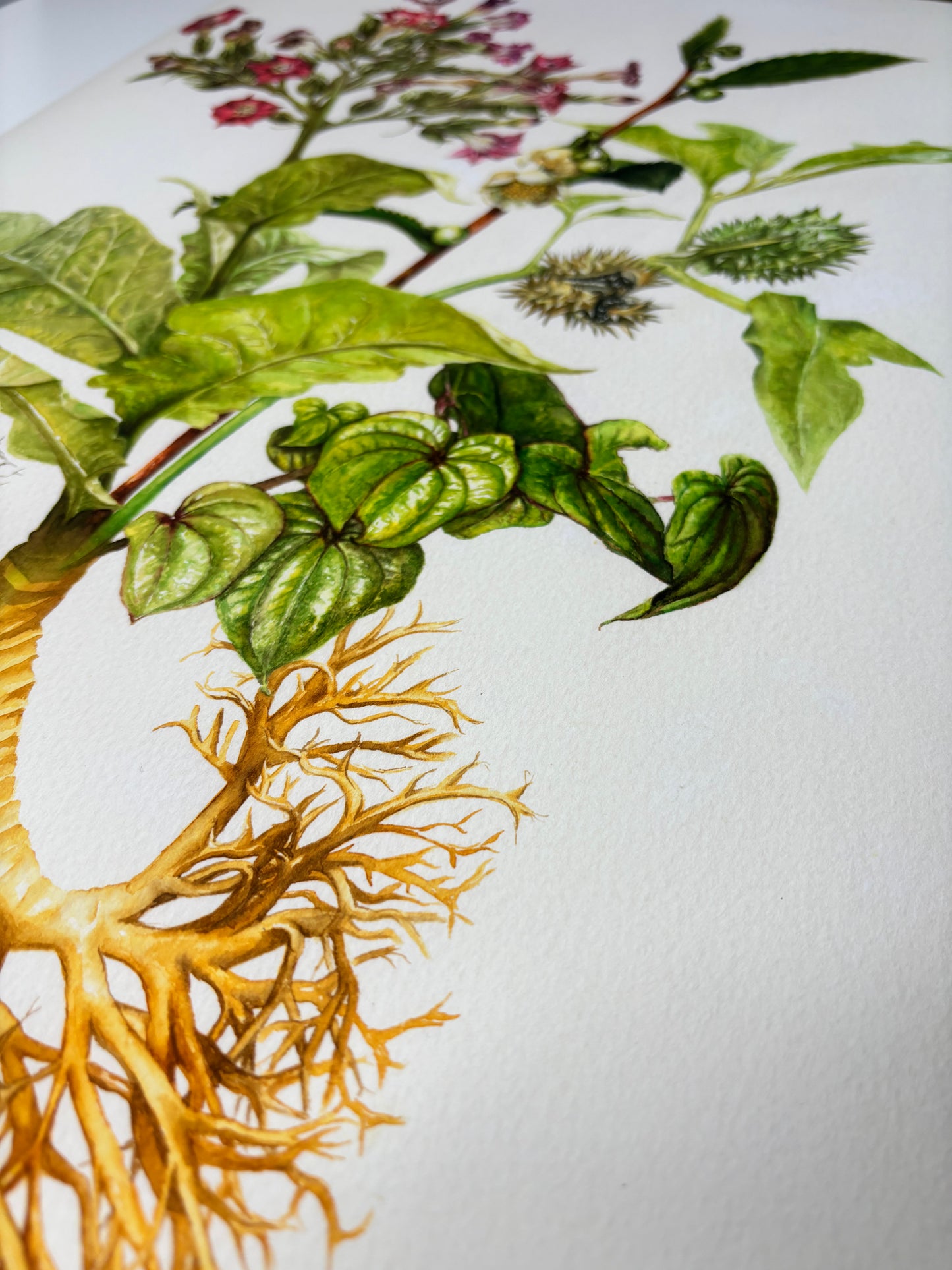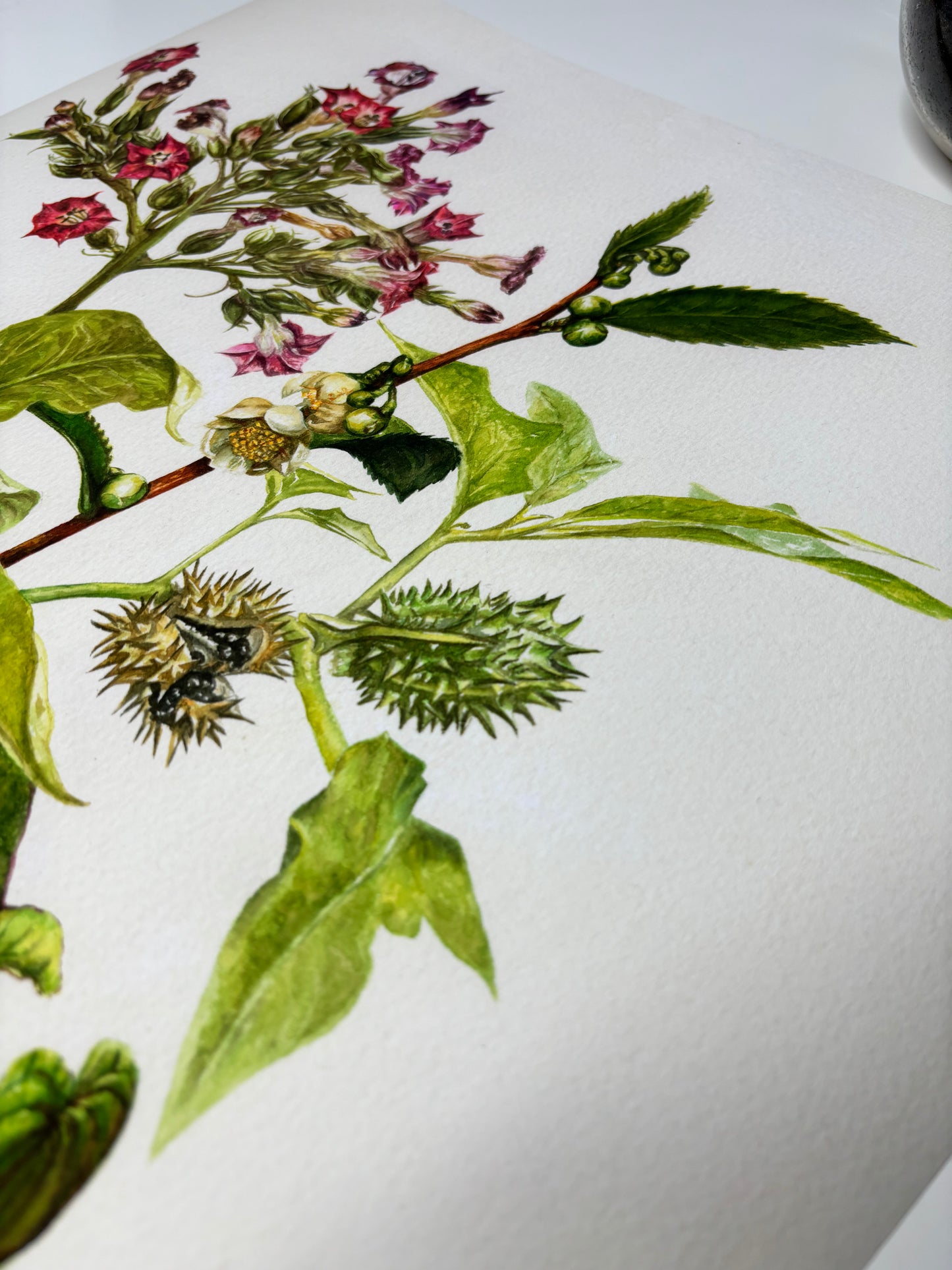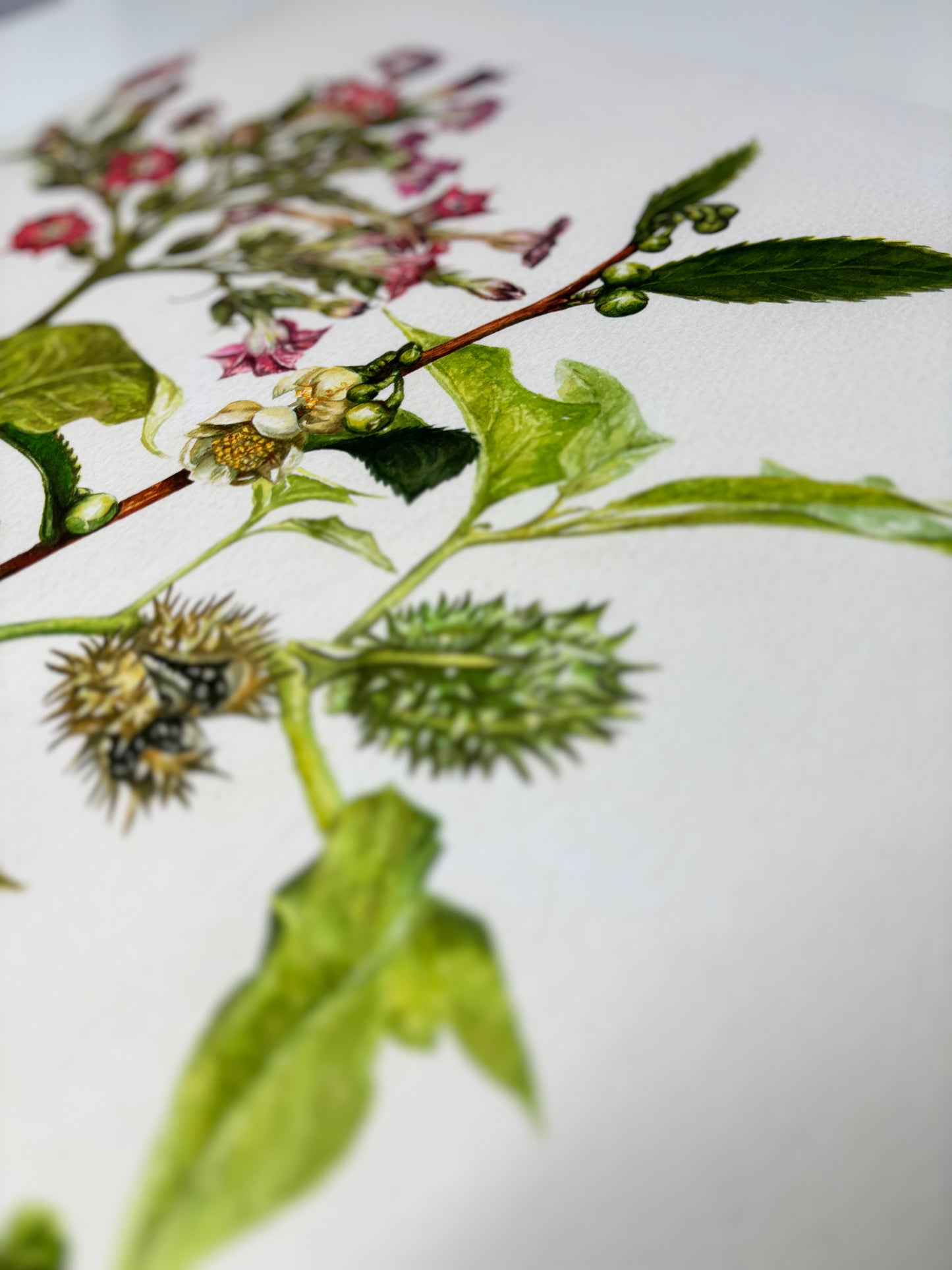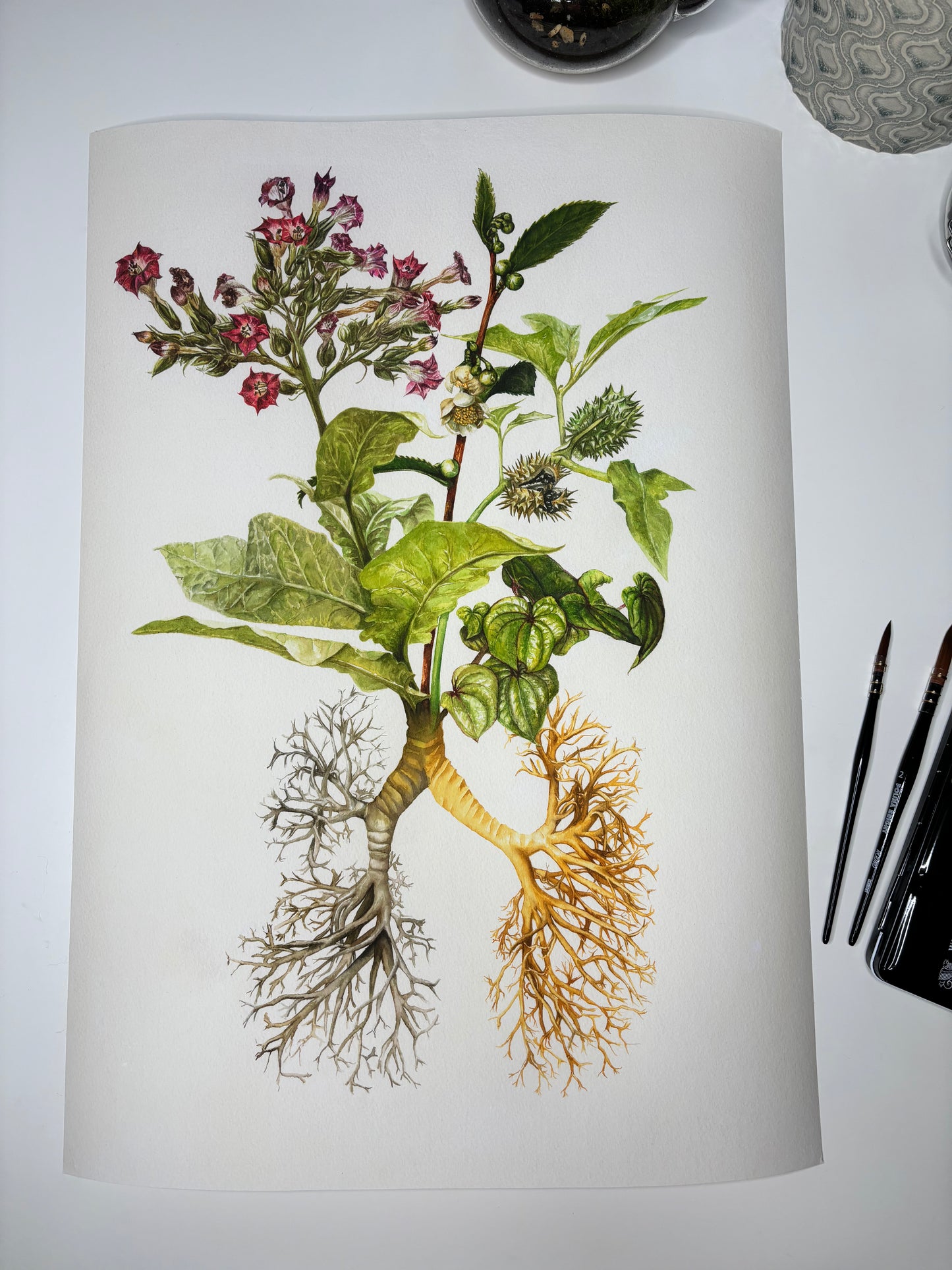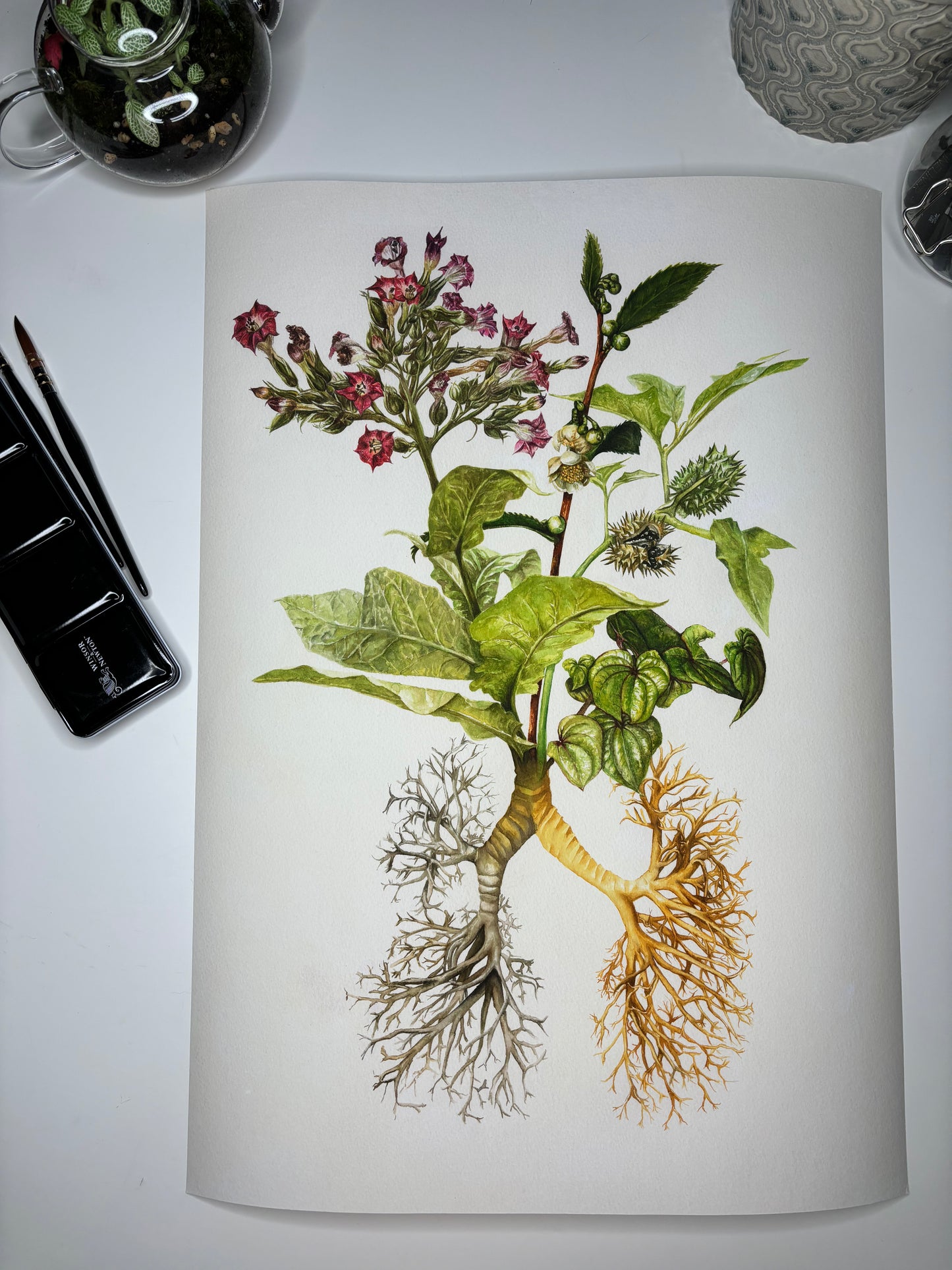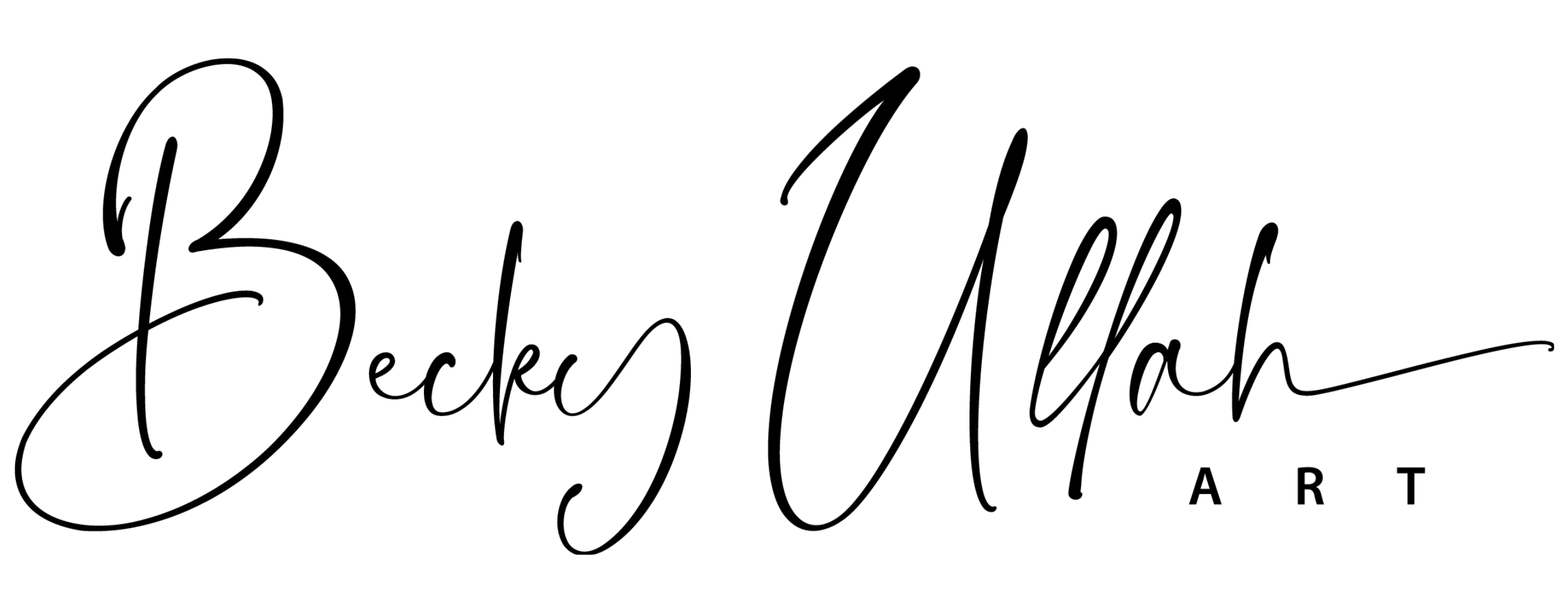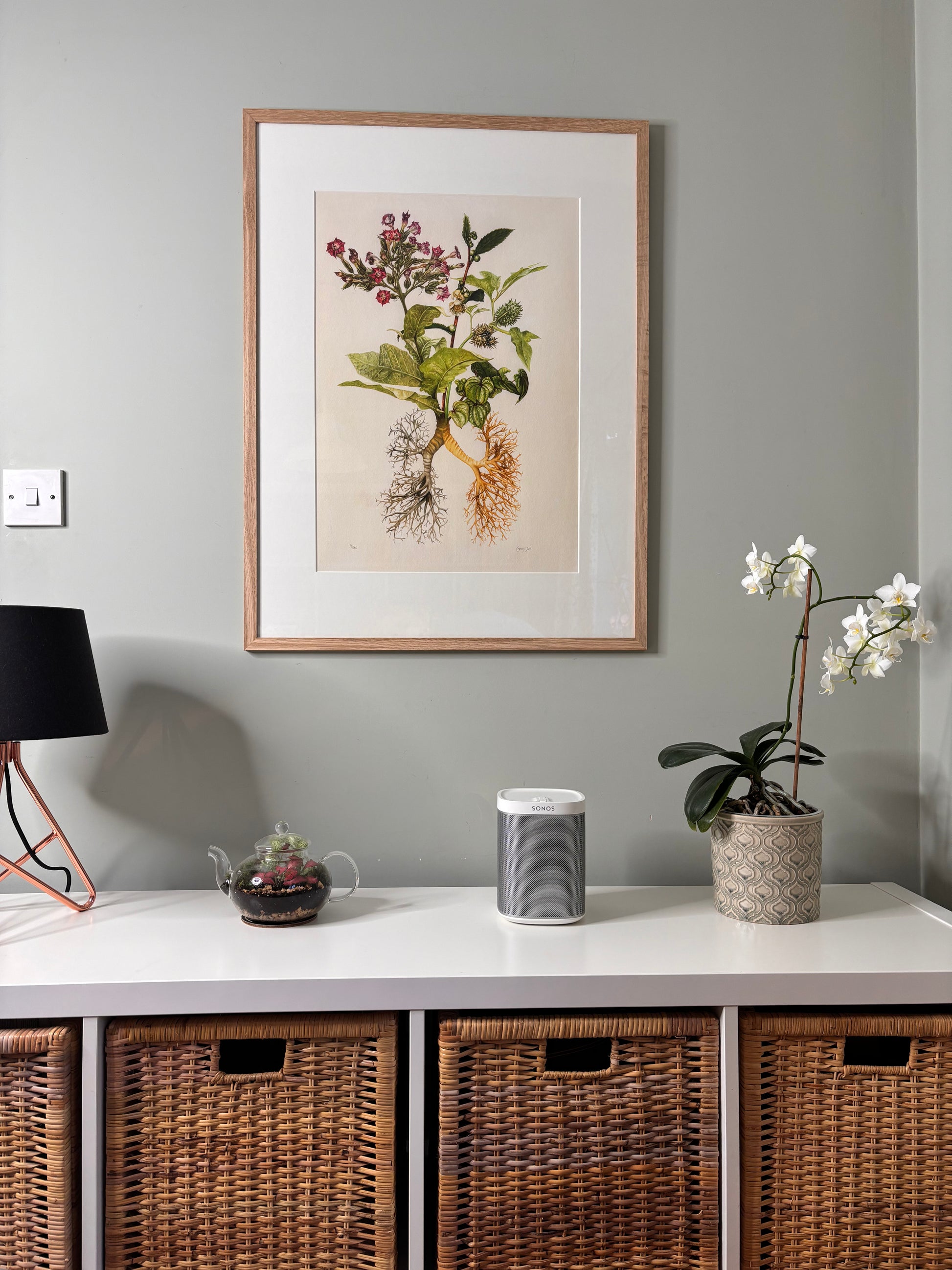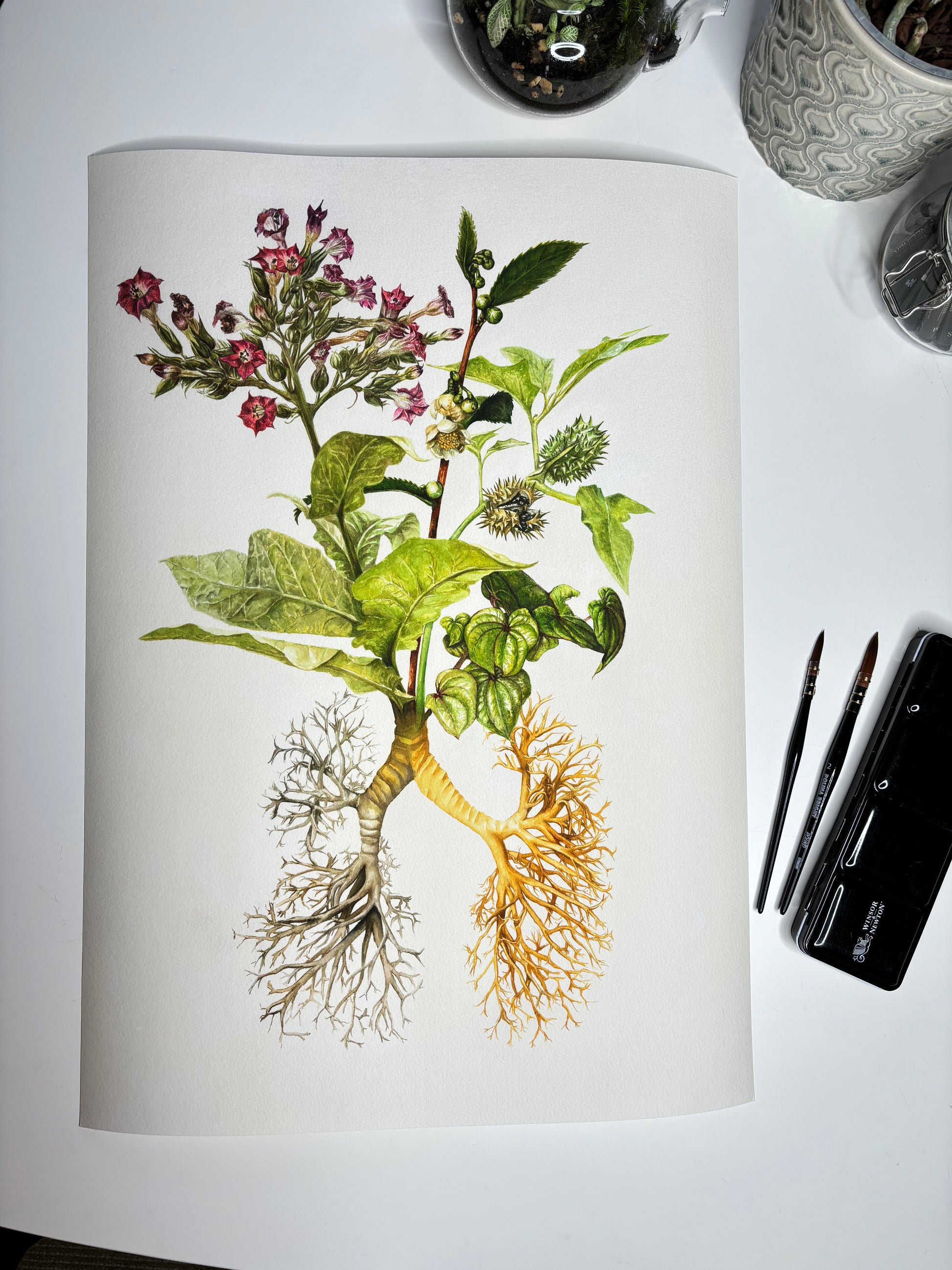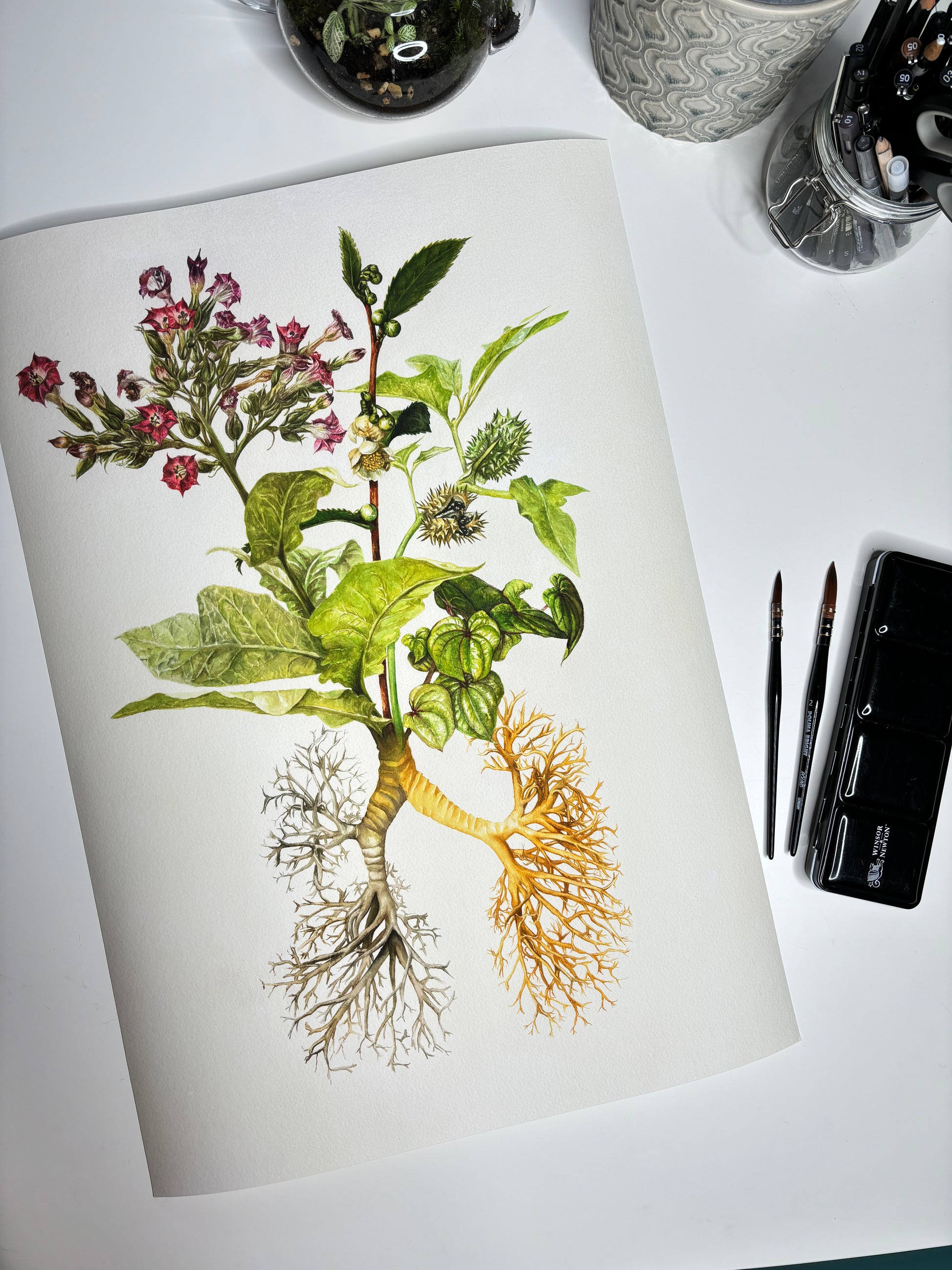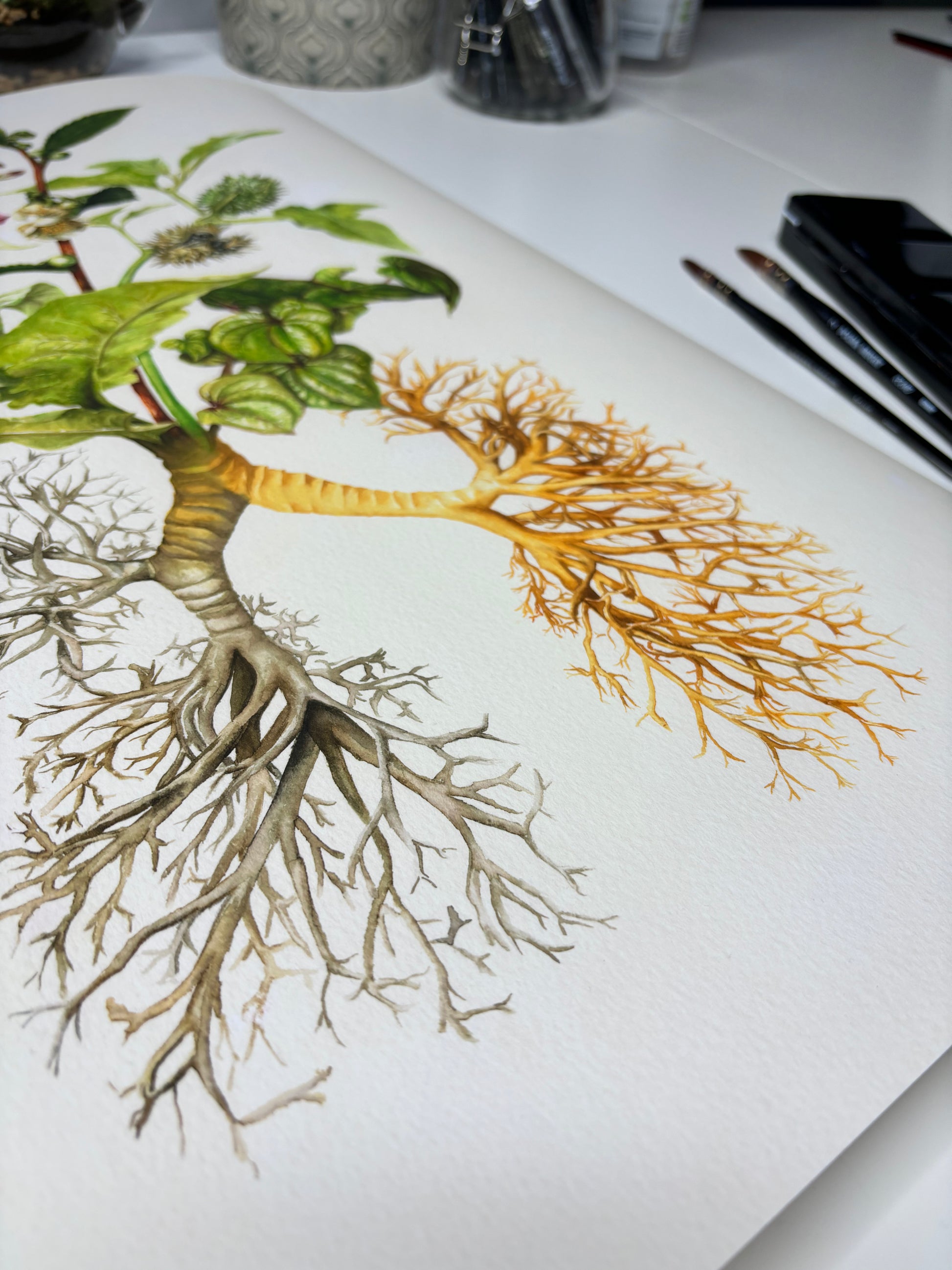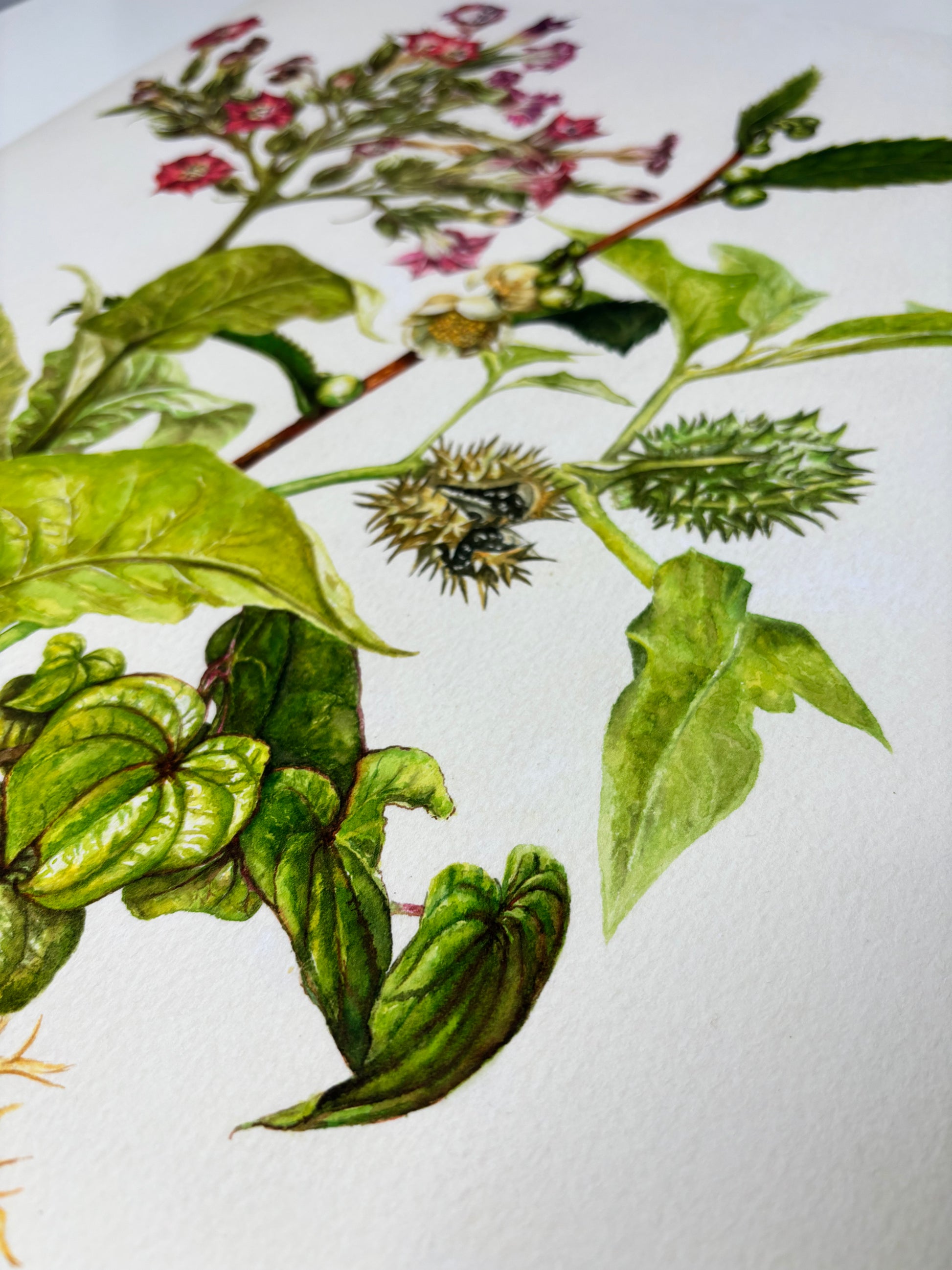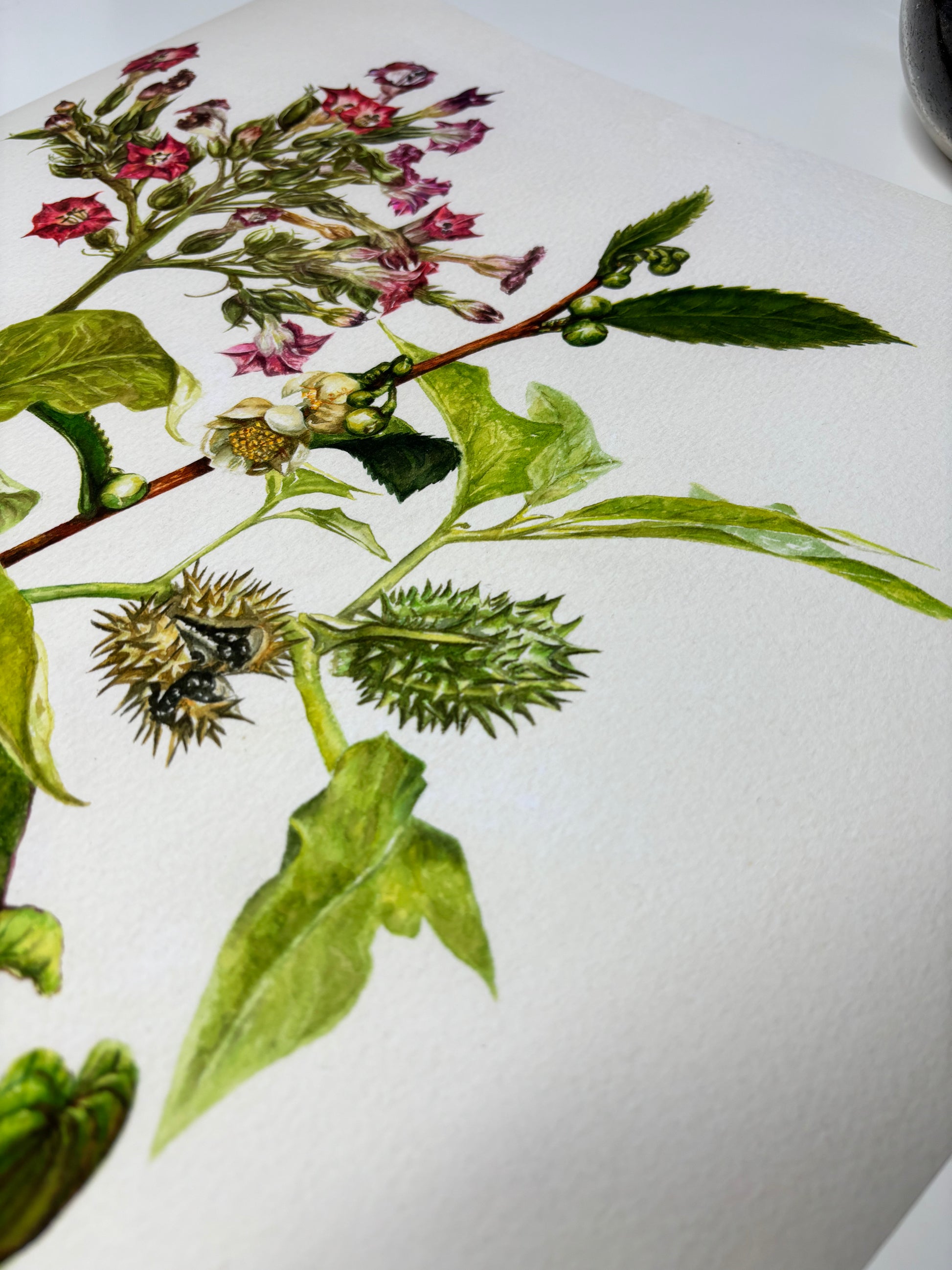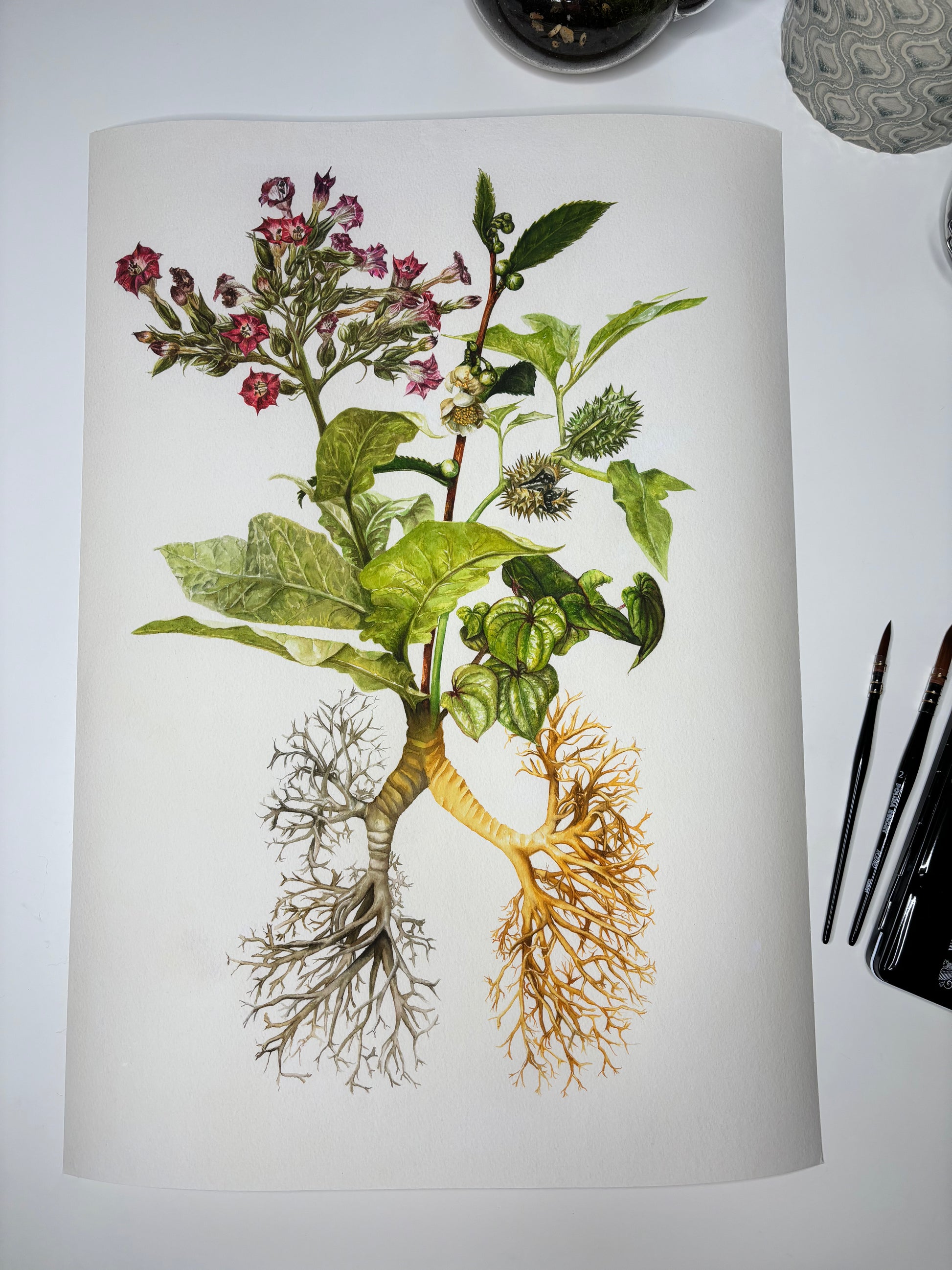The Medicinal Lungs Limited Edition Print A2
The Medicinal Lungs Limited Edition Print A2
This is the second piece in a series of botanical illustrations, which aim to highlight where modern prescription medications were first derived. These medicinal plants grow out of a root system, which represents the organ these plants go on to treat. In this instance, the bronchial “tree”, which forms the lungs. In fact, this can be the “root” of delivery of several of these drugs:
Nicotiana tobacum - The tobacco plant is responsible for many serious lung diseases, but nicotine replacement therapy also helps many smokers to stop smoking.
Camellia sinensis - The tea plant contains theophylline, which can be used to treat asthma and COPD alongside other medicines.
Datura stramonium - The thorn apple has antimuscarinic properties which led to the development of ipratropium and tiotropium bromide used for COPD and asthma.
Dioscorea polstachya - The Chinese yam contains diosgenin, which is an important precursor of the steroid medicines used to treat inflammatory lung disease.
Hand signed, giclée print on 310 gsm Museum Heritage acid-free paper, meeting the highest museum quality archival standards.
Size is A2 (420 x 594mm or 16.5 x 23.4 inches).
This is a limited edition with only 200 available.
Shipping is usually within 1 week and sent next day special delivery, tracked and signed for. The art is carefully packed in a solid cardboard tube and wrapped in glassine acid-free paper.
If you would like this item framed in an oak veneer, glass-fronted frame with a custom made mount, then please select this option at checkout for an additional £85. Please allow additional time for dispatch as the frames are ordered as required.
COLLECTION - if you are local to Hitchin and would prefer to collect, please send me a direct message.
Care Advice
Please keep the print out of direct sunlight and frame under acrylic or glass protection to avoid deterioration in pigments.
Please make sure your hands are clean and remove the print carefully from the packaging.
Couldn't load pickup availability
